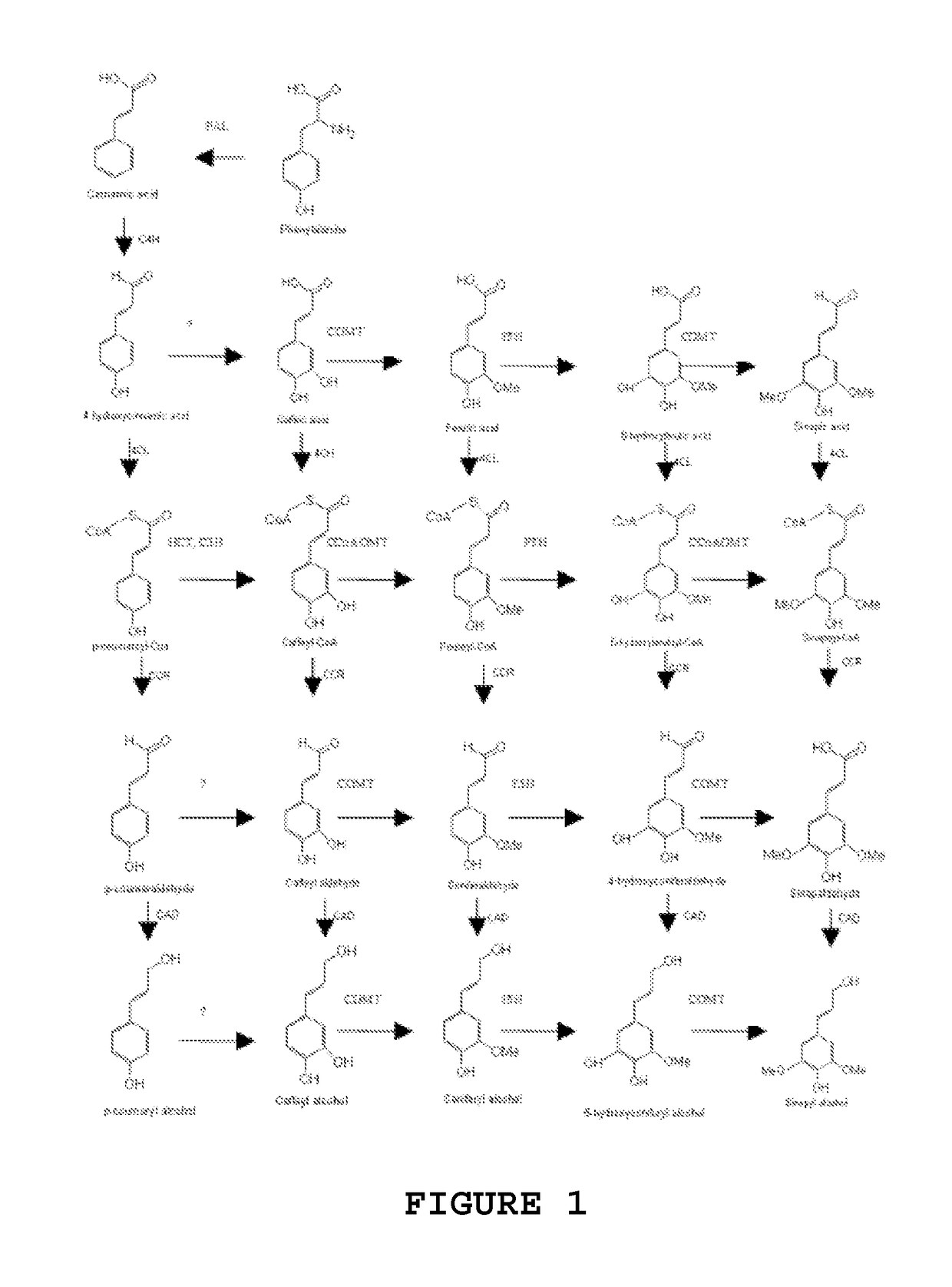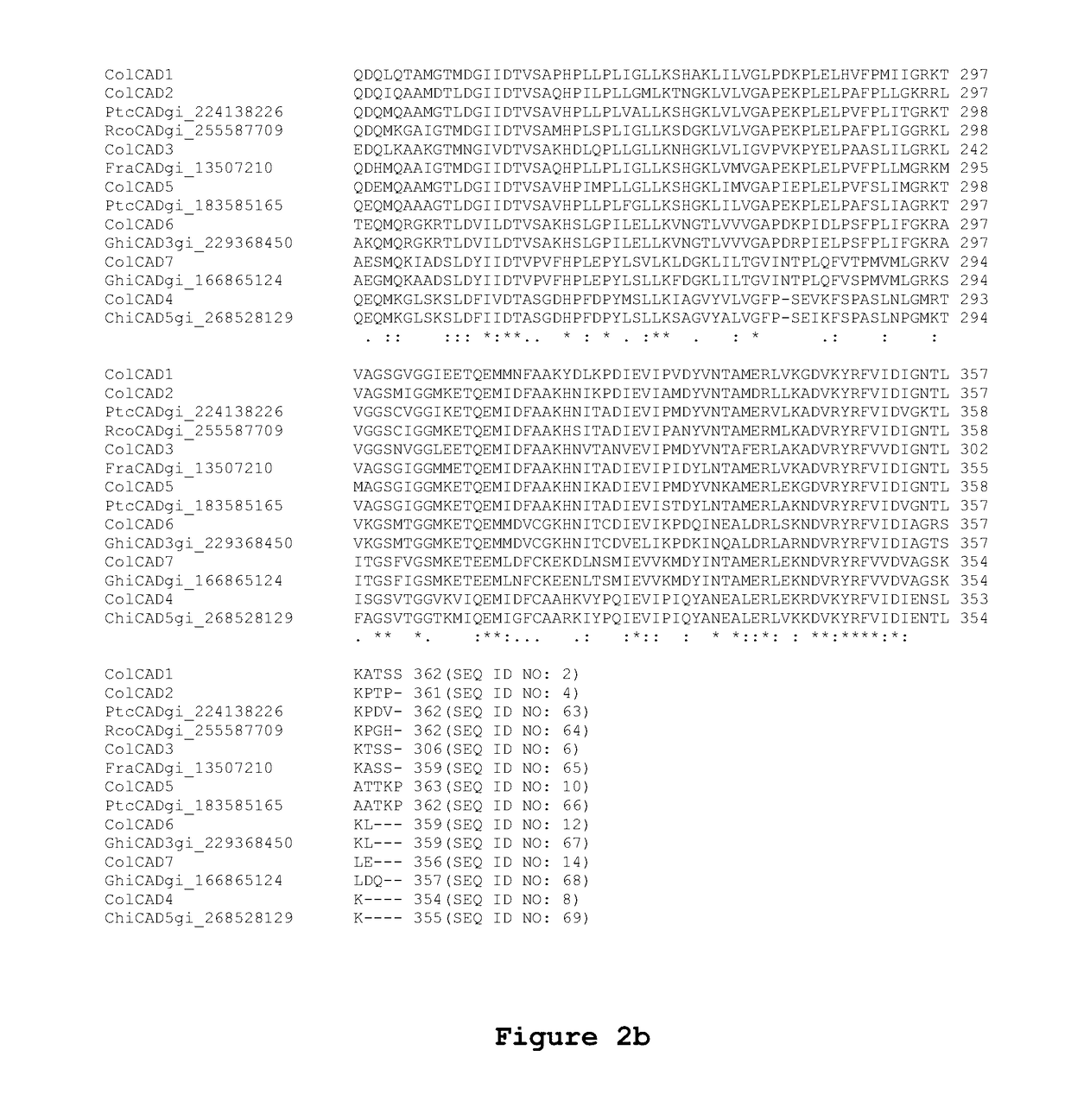Polynucleotides encoding enzymes from the jute lignin biosynthetic pathway
a technology of lignin biosynthetic pathway and polynucleotides, which is applied in the field of polynucleotides encoding enzymes from the jute lignin biosynthetic pathway, can solve the problems of limiting the cost-effective/efficient use of plant materials, the amount of lignin deposited, and the limitation of the use of biomass for fiber, chemical and energy production, etc., to improve the yield of fiber, improve the strength of fiber ratio
- Summary
- Abstract
- Description
- Claims
- Application Information
AI Technical Summary
Benefits of technology
Problems solved by technology
Method used
Image
Examples
Embodiment Construction
[0046]Ten known enzyme families are associated with monolignol biosynthesis. (Goujon et al., 2003). The families are PAL (phenylalanine ammonia-lyase), C4H (cinnamate-4-hydroxylase), 4CL (4-coumarate:CoA ligase), HCT (p-hydroxycinnamoyl-CoA:shikimate / quinate p-hydroxycinnamoyl transferase), C3H (4-coumarate 3-hydroxylase), CCoAOMT (caffeoyl-CoA O-methyltransferase), CCR (cinnamoyl-CoA reductase), F5H (ferulate 5-hydroxylase), COMT (caffeic acid O-methyltransferase), and CAD (cinnamyl alcohol dehydrogenase). A proposed schematic of the monolignol biosynthetic pathway in Jute is shown in FIG. 1.
[0047]The lignin biosynthesis pathway in jute owes its complexity, in part, to the presence of several multifunctional enzymes, and to the constituent enzymes spanning several diverse gene families. The first enzyme of the phenylpropanoid pathway is PAL (phenylalanine ammonia-lyase), which causes the deamination of phenylalanine, producing cinnamic acid. The second enzyme of the pathway, C4H (c...
PUM
| Property | Measurement | Unit |
|---|---|---|
| nucleic acid | aaaaa | aaaaa |
| strength | aaaaa | aaaaa |
| mechanical strength | aaaaa | aaaaa |
Abstract
Description
Claims
Application Information
 Login to View More
Login to View More - R&D
- Intellectual Property
- Life Sciences
- Materials
- Tech Scout
- Unparalleled Data Quality
- Higher Quality Content
- 60% Fewer Hallucinations
Browse by: Latest US Patents, China's latest patents, Technical Efficacy Thesaurus, Application Domain, Technology Topic, Popular Technical Reports.
© 2025 PatSnap. All rights reserved.Legal|Privacy policy|Modern Slavery Act Transparency Statement|Sitemap|About US| Contact US: help@patsnap.com



